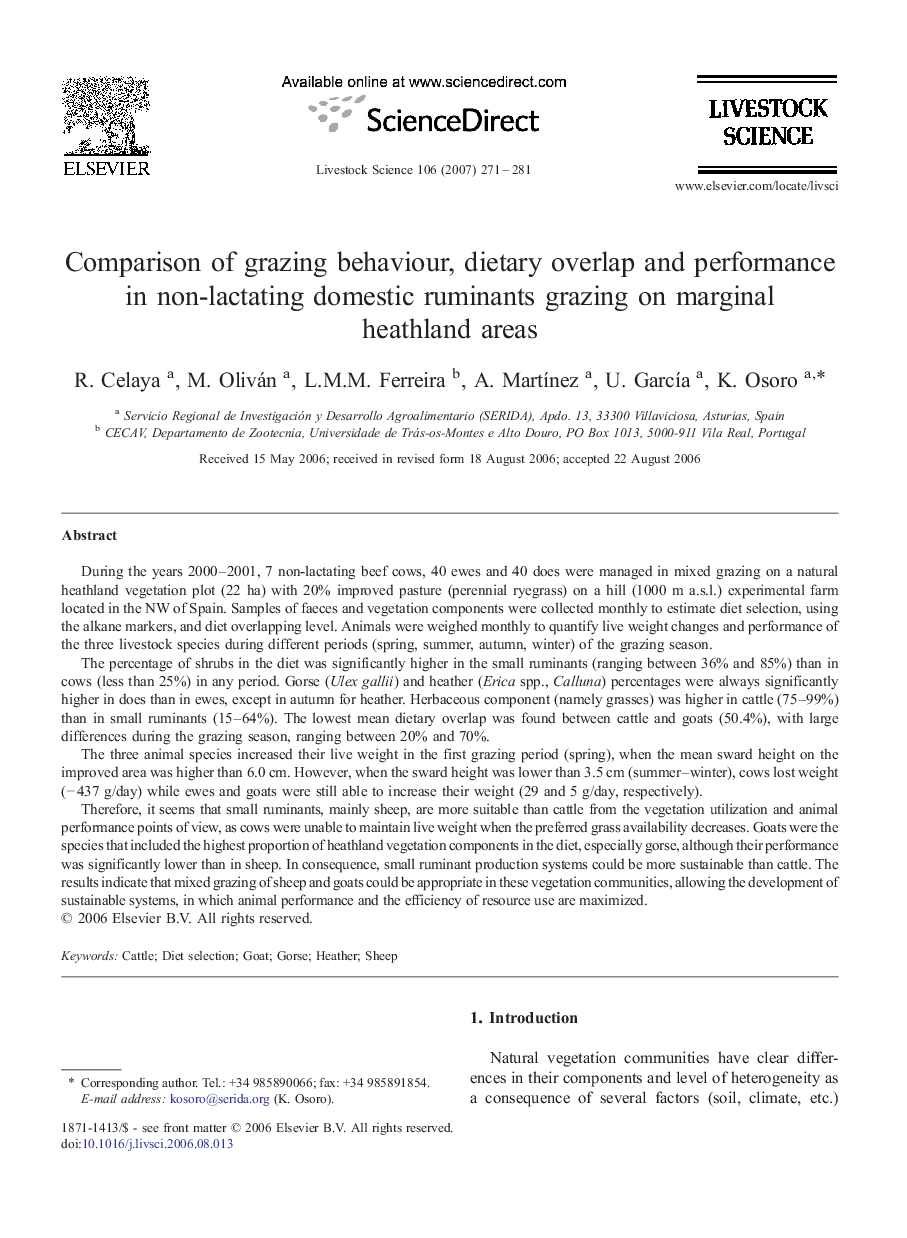| Article ID | Journal | Published Year | Pages | File Type |
|---|---|---|---|---|
| 2449002 | Livestock Science | 2007 | 11 Pages |
During the years 2000–2001, 7 non-lactating beef cows, 40 ewes and 40 does were managed in mixed grazing on a natural heathland vegetation plot (22 ha) with 20% improved pasture (perennial ryegrass) on a hill (1000 m a.s.l.) experimental farm located in the NW of Spain. Samples of faeces and vegetation components were collected monthly to estimate diet selection, using the alkane markers, and diet overlapping level. Animals were weighed monthly to quantify live weight changes and performance of the three livestock species during different periods (spring, summer, autumn, winter) of the grazing season.The percentage of shrubs in the diet was significantly higher in the small ruminants (ranging between 36% and 85%) than in cows (less than 25%) in any period. Gorse (Ulex gallii) and heather (Erica spp., Calluna) percentages were always significantly higher in does than in ewes, except in autumn for heather. Herbaceous component (namely grasses) was higher in cattle (75–99%) than in small ruminants (15–64%). The lowest mean dietary overlap was found between cattle and goats (50.4%), with large differences during the grazing season, ranging between 20% and 70%.The three animal species increased their live weight in the first grazing period (spring), when the mean sward height on the improved area was higher than 6.0 cm. However, when the sward height was lower than 3.5 cm (summer–winter), cows lost weight (− 437 g/day) while ewes and goats were still able to increase their weight (29 and 5 g/day, respectively).Therefore, it seems that small ruminants, mainly sheep, are more suitable than cattle from the vegetation utilization and animal performance points of view, as cows were unable to maintain live weight when the preferred grass availability decreases. Goats were the species that included the highest proportion of heathland vegetation components in the diet, especially gorse, although their performance was significantly lower than in sheep. In consequence, small ruminant production systems could be more sustainable than cattle. The results indicate that mixed grazing of sheep and goats could be appropriate in these vegetation communities, allowing the development of sustainable systems, in which animal performance and the efficiency of resource use are maximized.
